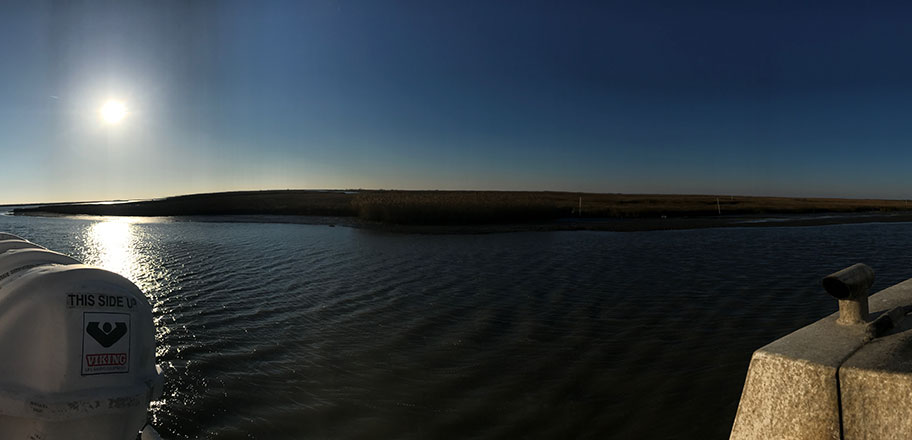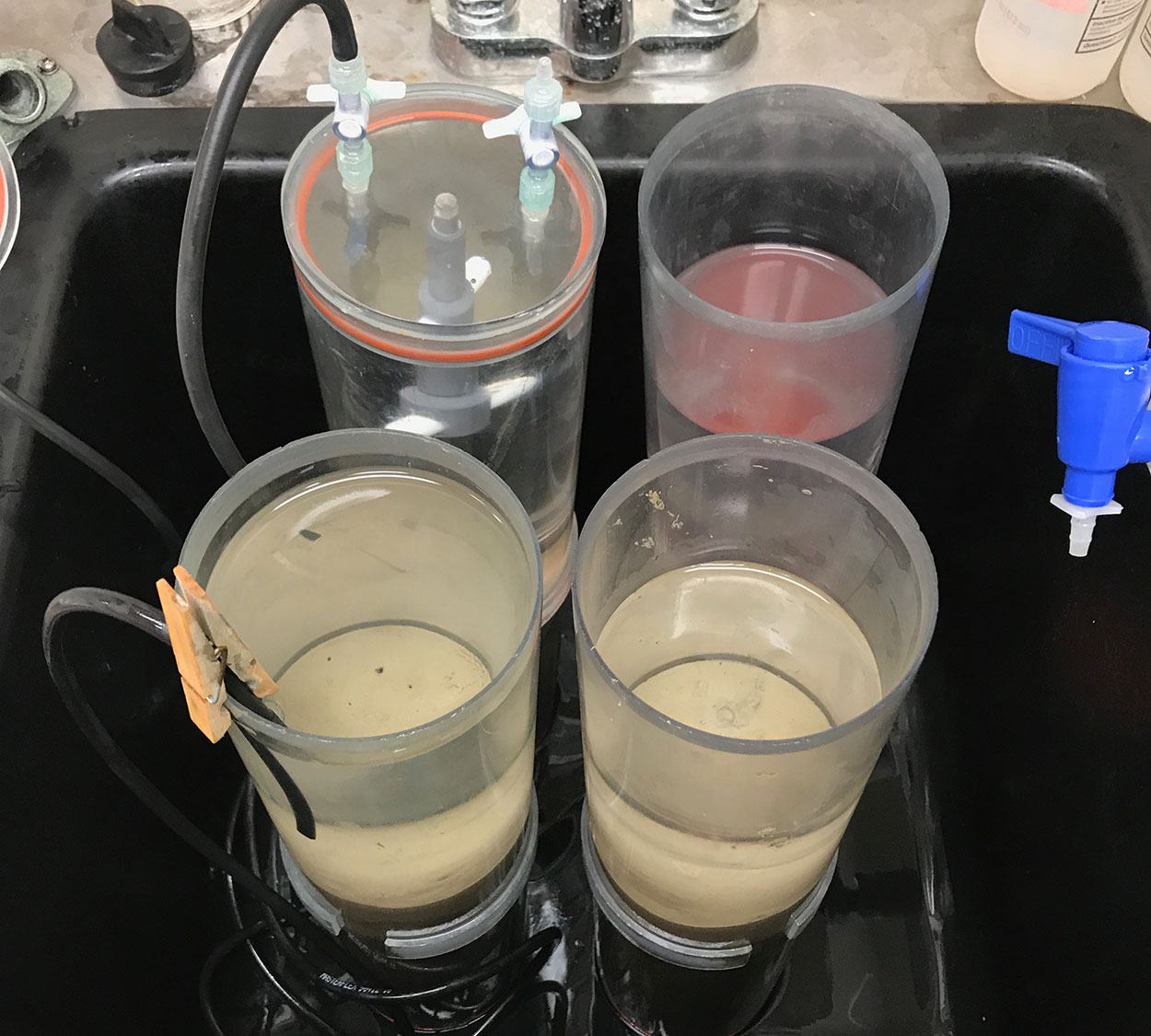
Dr. John Lehrter recently wrapped up research expedition number two of 2018. Both delivering different samples to analyze, but all in a quest to answer the larger question. How does the ocean work?
“It’s like being invited to another lab,” Dr. Lehrter said. “ There’s a great deal of collaboration, and a lot of these big questions require teams of people with different areas of expertise.”
Dr. Lehrter’s April to May cruise, sponsored by the Naval Research Laboratory, included the Dauphin Island Sea Lab/University of South Alabama, the University of Delaware, Florida International University, and Florida Atlantic University.
His January cruise also included four universities on board: the University of Delaware, Louisiana State University, Louisiana Universities Consortium, and the Dauphin Island Sea Lab/University of South Alabama.
“We are all using one basic water sample,” Dr. Lehrter’s lab member Mai Fung said. “But that sample can be used in so many ways by different researchers to understand interactions between biology, chemistry, and physics.”
Each expedition provided a chance to study different areas by Dr. Lehrter and his team, Mai Fung (Ph.D. Student) and Alex Hagemeyer (M.S. Student).
In January, the DISL/USA group looked at ocean acidification and hypoxia and understanding how biology affects geochemistry in the coastal environment. This expedition was the fifth in a series. A sixth similar expedition is scheduled for the fall.

Ocean acidification occurs as the pH level drops (hydrogen ion increases) within the ocean. The Mississippi River affects this process as it dumps nitrogen and phosphorus along the Louisiana Shelf. The team measures the primary production and respiration of the Louisiana shelf, which are stimulated by nitrogen and phosphorus, by incubating water samples from throughout the water column for 24 hours. The net result of the production and respiration processes contributes to coastal ocean acidification in combination with the global uptake of carbon dioxide that is driving open ocean acidification. The team also looked at sediment samples from a few stations to measure fluxes of carbon dioxide, pH, and oxygen. By looking at the flux, the team can determine what is coming out of the sediment and into the water column.
Dr. Lehrter said similar processes are happening in other coastal regions. By understanding primary production, respiration, ocean acidification, and hypoxia within the coastal region, the results may be applied globally to other large river-dominated systems .
Funding from the National Science Foundation is helping to continue this project to look at storm impacts on carbon and oxygen cycles on the Louisiana-Texas shelf following tropical storms like Nate, Harvey, and Cindy.
Dr. Lehrter said early takeaways from the work are that “acidification is mirroring hypoxia with higher respiration rates in the summer. Respiration is by far the dominant process in the coastal ocean.”
Dr. Lehrter and Hagemeyer switched gears for their late April to early May expedition with the Naval Research Lab. New instrumentation on board allowed Lehrter and collaborators the chance to improve numerical models of zooplankton abundance and behaviour in relation to ocean fronts, eddies, and primary production. Lehrter has been developing this new model with the Naval Research Lab over the last five years to examine how ocean biology, chemistry, and physics are intertwined.
“A recent publication in Nature describes how the migration of zooplankton can be so massive it may contribute to the circulation of the ocean,” Dr. Lehrter shared. “As they swim, they impart motion to the water. ”

New imaging systems, including a holographic camera, were used to vertically profile the water column and allowed the researchers to distinguish and plot the variety of zooplankton, including sizes, shapes, and taxa.
“In the past, zooplankton were sampled with nets. A net is dragged up through the water, so, it was difficult to distinguish where in the column the animals were gathered and the nets often destroyed some of the more fragile animals such as gelatinous zooplankton, like small jellyfish,” Dr. Lehrter said.
Understanding the scattering of the zooplankton throughout the water column can help scientists understand vertical migration patterns and how these are related to prey abundance and other physical and biological properties of the waters.
Dr. Lehrter said there are stacks upon stacks of hard drive data (100s of terabytes) to analyze, which may take up to a year.
With two cruises under Hagemeyer’s belt this year, she’s beginning to get a broad idea of what to study for her thesis.
“These cruises are more in depth then what I’ve been involved in before,” Hagemeyer said. “I’ve also never had a strong chemistry background, so, it’s opening myself up to different aspects.”
“It’s real research with a chance to learn hands on skills we need to develop our own research,” Fung adds. “We also get to witness practical troubleshooting, and how to maximize every hour and every second with various disciplines aboard an expedition.”